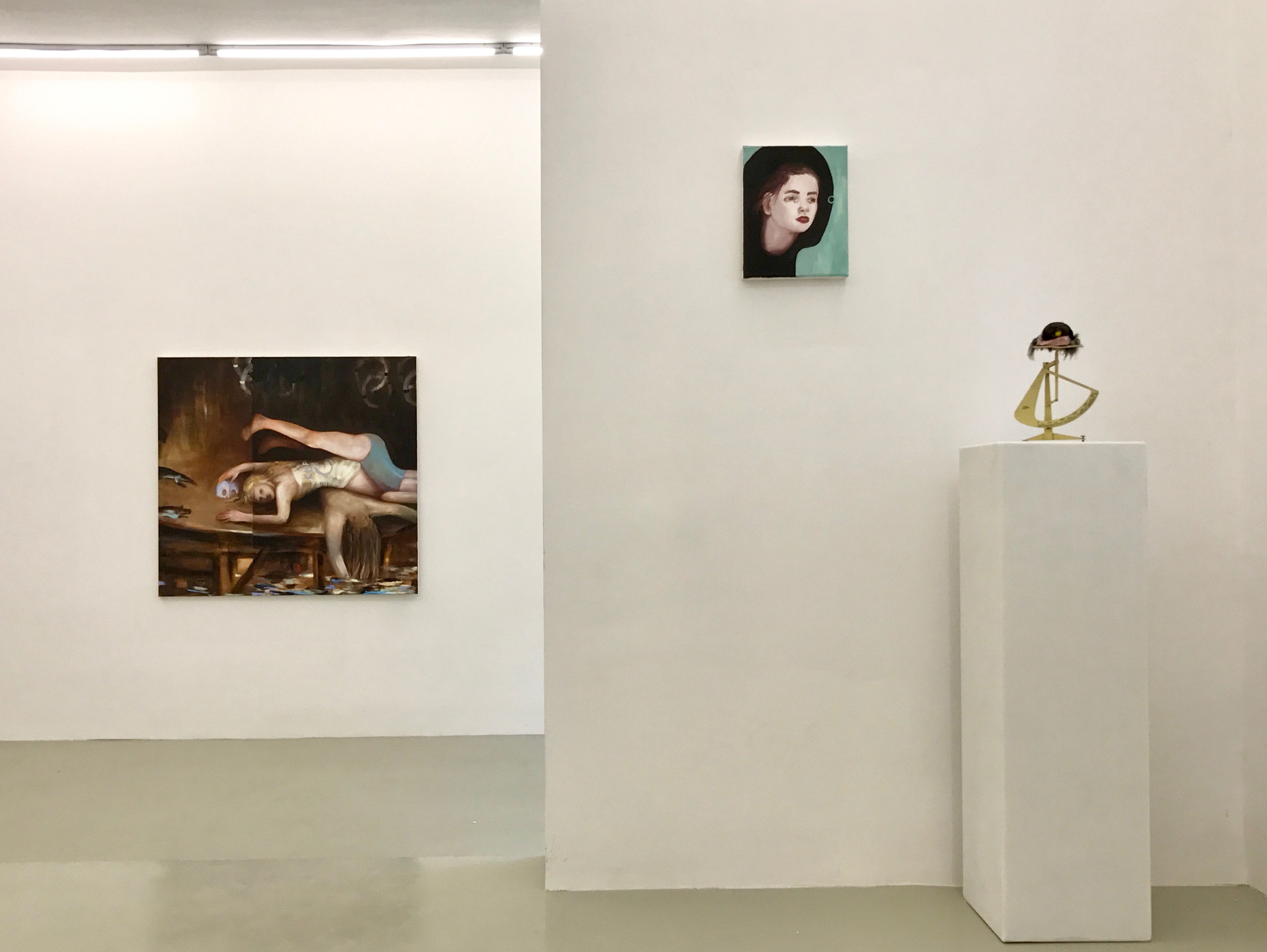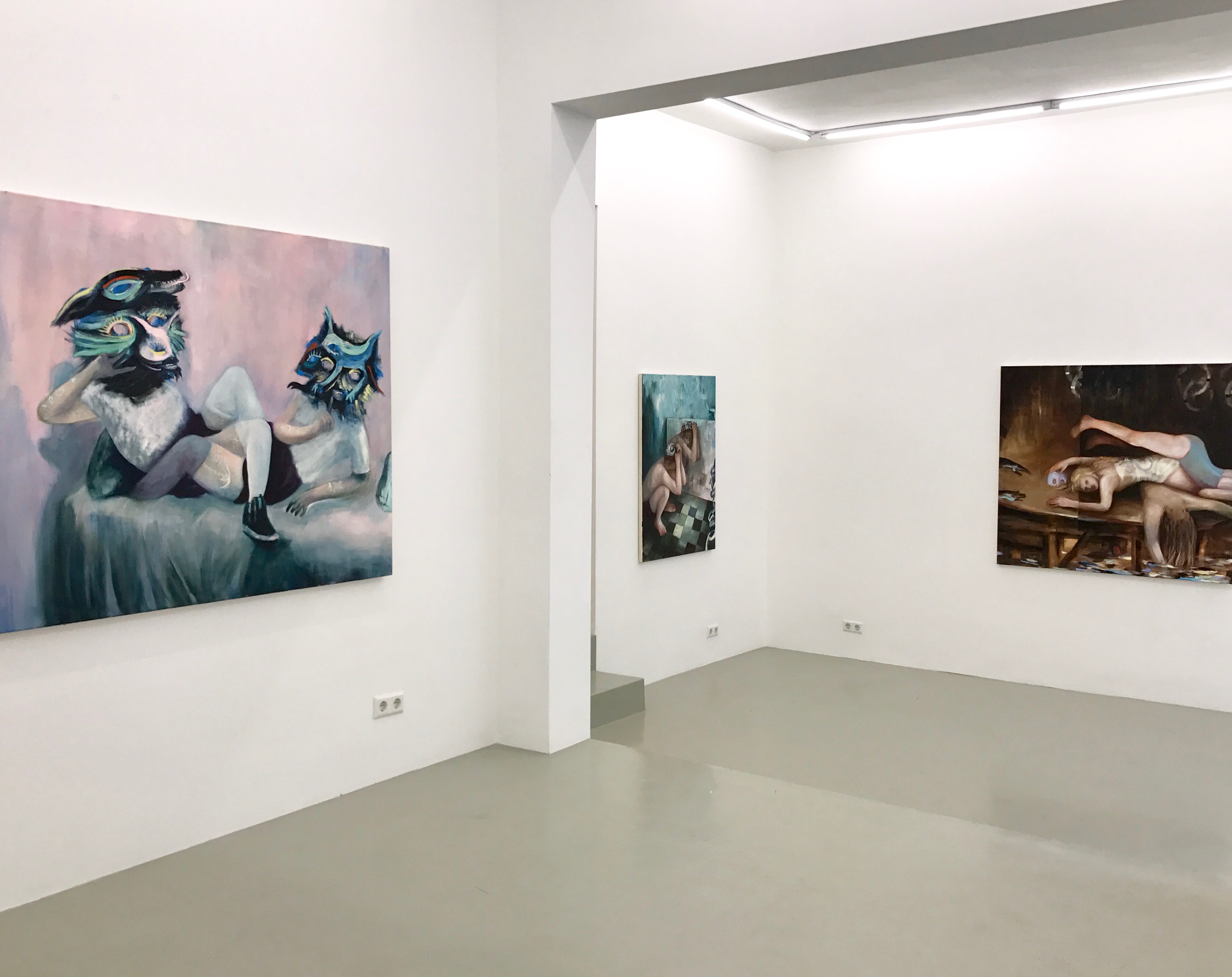Have you met... Edmond Gallery
Have you met... Edmond Gallery
We met with Yanwu Yuan of Edmond Gallery, who founded and runs the gallery along with her husband, Eric Vinassac. Yanwu showed us around the space in Charlottenburg, which opened last autumn, and spoke to us about their inspirations, ambitions and the levels of cultural exchange and exploration – both on an intimate and broader scale – that underly its foundation.
Can you tell us a bit about your background? What were you doing before starting a gallery?
I'm originally from China, and I grew up in Shanghai. I studied journalism at university and then worked for five years at a newspaper. In 2003, I moved to Paris and studied photography and contemporary art. So I can also say that I used to be an artist, because after my studies I had several exhibitions in Paris – both solo and collective. Then, in 2012, I moved to Geneva because I had met my husband in Paris and then we both moved. We had a son two years later – in 2014 – and then moved to Berlin when he was 3 months old. We named our gallery after our son – Edmond – because it was around the same time that we had this idea to open the gallery. And this project's also like a child, in a way.
Why did you decide to start the gallery here in Berlin?
I think we both wanted a new start, a new life, that was different from what we had known before. Berlin seemed like the right place. It’s the place to be – it's the capital of Germany and more and more people are moving here. For us, it’s also a question of affordability – it's still affordable for us to do things here. At the same time, it's also a lovely city because of the quality of life: there are lots of green parks and areas, and it's good for families.

How did you get started? What were some of the biggest challenges?
I guess the first challenge was that we are not German – neither of us speaks German. We speak French and English, and I speak Chinese. We also didn't have any connections before we moved here. But Berlin is a very international city, so lots of people are from abroad, and most speak English. Things have also been changing over the last two years: with each exhibition that we've done, we’ve met more and more people. We’ve met more and more artists, people in the art world; so, it's getting better. And of course, the sales – a major criteria for the gallery's success – is also a big challenge. But among the new generation of arrivals, there are also more and more collectors, more and more people who are able to buy art, and also young people who are beginning to collect art. So, maybe it will be different in the coming years. For us, because we want to be a serious, professional gallery, the sales of artworks are of course important; but before that, we focus on providing artists or curators the space to experiment with their art – with freedom and without stress – to really take time to create something new. The advancement of artists is most important for us.
Tell us about your team. How is it structured? How are responsibilities shared or divided?
It's me and my husband at the moment. Sometimes we have a temporary assistant as well. I'm taking care of all the administration and relationships with artists – communication with artists, with the media, and all the social aspects. My husband writes and does research – for press releases and exhibition text.
How would you define the program – or concept – of Edmond Gallery?
For the moment, we are a young gallery, so our program is ever evolving and interdisciplinary. But the core focus is to foster a dialogue between French, Chinese and German artistic communities. We are primarily interested in introducing young Chinese and European artists – emerging or, at times, established. So far, we’ve showcased four Chinese artists, one German artist and one Swedish artist. We want to show something new, something that can raise questions: for example, by exploring sexuality – as the current exhibition does – or existing taboos. The focus on cultural exchange also draws from our roots – my husband's and my own.

How do you select or find the artists that you work with?
Sometimes they're recommended to us by curators. Our first exhibition was a two-man show, and a Chinese curator had recommended the artists. There are also two upcoming exhibitions of artists who were recommended by curators from Germany and France. Sometimes it's simply that we meet artists, we visit artist studios, we keep in touch and then we arrive at a collaboration.
Which, if any, other types of programming do you organize outside of the exhibition format?
We also do artist talks. For this exhibition, we organized a talk with two German curators. We have also planned cultural events. For example, an exchange between European artists and Chinese artists through lectures and poetry by a famous Chinese poet who lives between London and Berlin – this is in our program for January next year.
Can you tell us a bit about your current exhibition?
It's by a young Chinese photographer; he only photographs young women. Previously, he was a writer and had written novels. In 2011, I think, he began to photograph young women, simply because he likes women. In the beginning, he mostly photographed friends, and then more and more women requested to be photographed via social media. This is how he became famous. He has this series called ‘Menstrual’, which he started in 2011 and is ongoing. He has photographed more than 200 women already. He never plans the shooting; most of the time it’s the young women who provide the setting and decide how to be photographed. But they're always naked. Sometimes they show their most intimate parts in front of the camera, but we don't see any embarrassment in the photos. The photographer also likes to take photos in which their faces are shown, because that's their identity and he wants to show that. There are also other series: one called ‘Night Tour’ – of women by night, sometimes in public places and sometimes inside; and another called 'Instax Love' – with Polaroids. This exhibition combines those three series of works.
Of course, because of its sexually explicit character, we sometimes cannot display the exhibition images on social media. I created the Facebook event and then, the next day, discovered it had disappeared. I had chosen a photo that wasn't so provocative, but maybe it's because of the exhibition title: ‘Sexually Explicit’. The artist has already shown these works in China, though – the last time was in a photo festival. We wanted to show his work because we wanted to do something new: show a new photographer whose work is controversial. Some people don't like him, especially women, but then some people do. We're creating a debate and showing a different point of view. It's interesting for us to introduce this kind of artwork from China.
What other aims do you have for the gallery program in the future? How would you like to see it develop?
We would like to participate in art fairs – contemporary art fairs are the most prestigious and would be our aim. We would also like to be a gallery that can really build a bridge between East and West – between France, China and Germany. And perhaps, with time, the gallery will get more and more established, and then also maybe the artists will as well. But I expect that this gallery will always be the one that will bring new things.
***
9mouth 九口走召, SEXUALLY EXPLICIT 23 June - 2 Sept 2017 Edmond Gallery more info